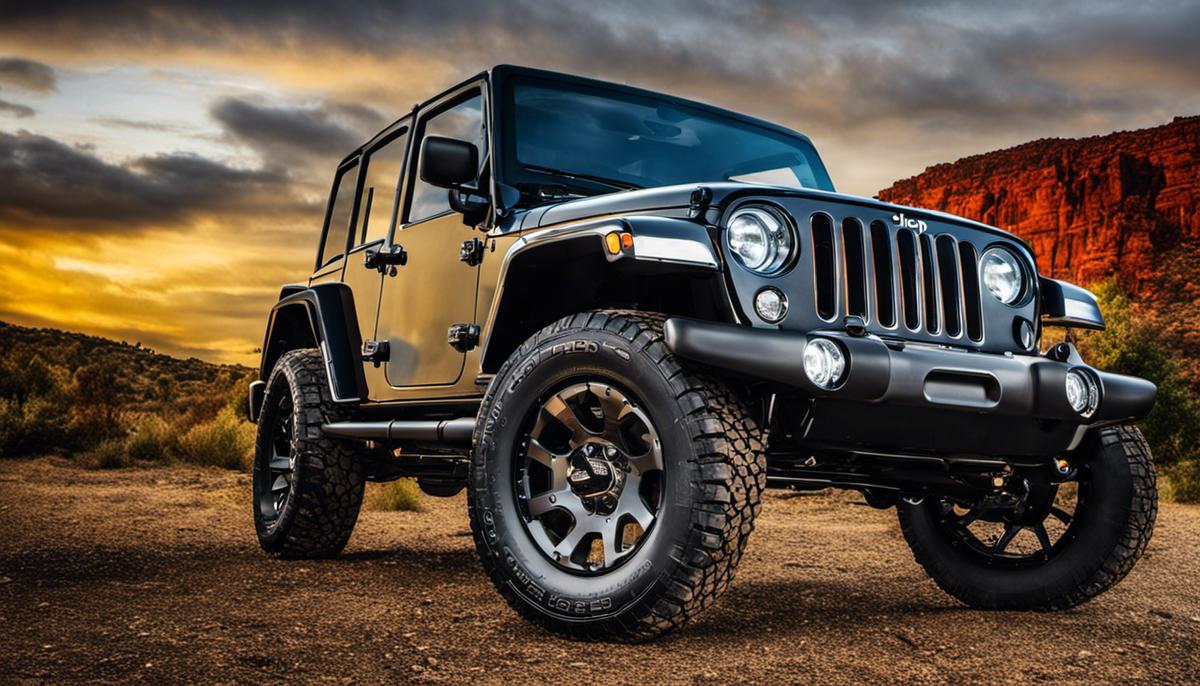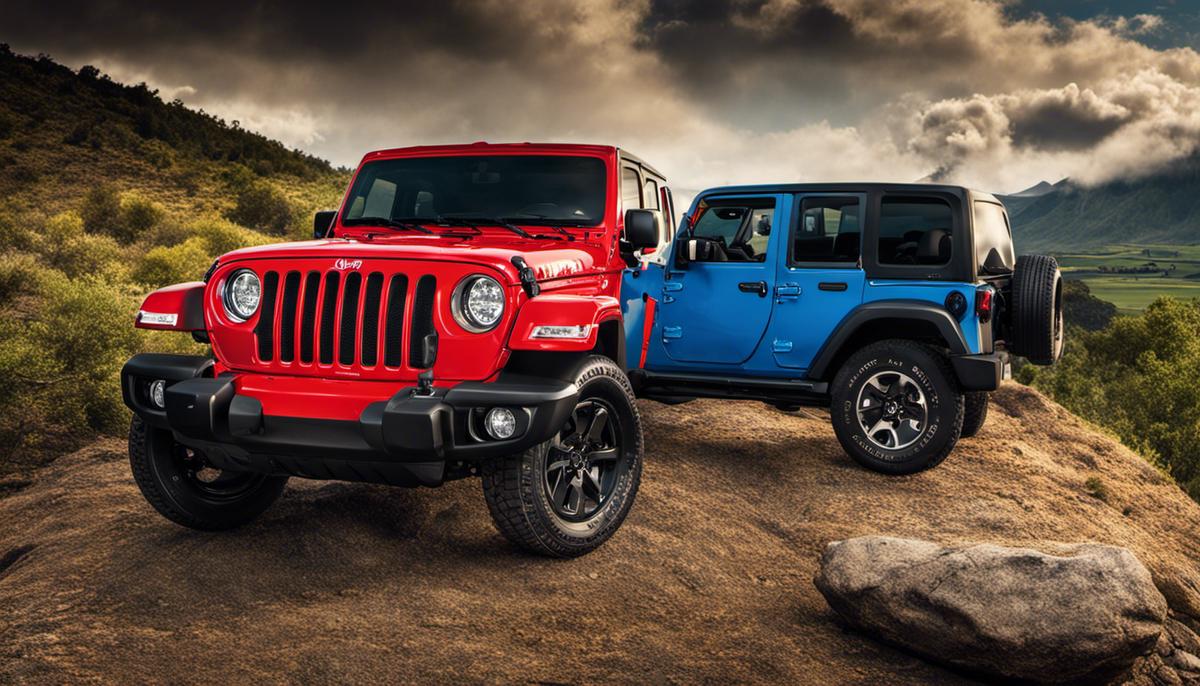Petrol vs Diesel: Unravelling the Used Jeep Wrangler Conundrum

Last Updated on October 22, 2023 by Christ
The quest to find the perfect engine variant, when in the market for a used Jeep Wrangler, often boils down to one quintessential question – petrol or diesel? The answer, however, is replete with factors revolving around mechanical discrepancies, environmental concerns, and operational costs tied to each option. This content delves into the inherent mechanical differences found in petrol and diesel engines, especially in relation to the used Jeep Wrangler. It elucidates the technical aspects, including the injection system, the ignition process, and torque generation, all while assessing the performance, efficiency, and lifespan of the vehicle itself. The narrative will also navigate through the cloudy topic of environmental impacts, comparing emissions from both fuels in typical use scenarios with a keen focus on the roles of updated emission control technologies. Lastly, attention will be paid to a meticulous comparison of the operational costs tied to both fuel types, offering the reader an exact picture of the expenses to be expected in terms of fuel efficiency, cost per mile, maintenance, and fluctuating fuel prices.
Contents
Mechanical Differences in Petrol and Diesel Engines
Title: Understanding the Mechanical Divergences: Petrol vs. Diesel Engines in Used Jeep WranglersIt’s irrefutable : the automobile industry is constantly innovating, and the Jeep Wrangler has been part of this evolution. Whether you prefer petrol or diesel, both engines have their unique features and implications. To the unversed automotive adopter, understanding the fundamental mechanical differences might seem daunting, but fear not, technology is here to unsnarl this knot.
Starting with the basic concept, petrol and diesel engines function using the same core principle: internal combustion. Still, there are intrinsic differences that distinctively delineate their operation, fuel efficiency, power, and environmental impact.
A pivotal difference orbits around compression ratios. Diesel engines enjoy a higher compression ratio compared to petrol engines. By compressing air to a higher degree, diesel Wranglers ignite fuel more efficiently, resulting in superior fuel economy and enhanced torque. Stellar performance off-road, right? Talk about high-tech torque on both mountainous and rocky terrain!
Conversely, petrol engines adopt a lower compression ratio. This makes petrol models lighter and less noisy, thus granting a smoother and quieter ride on city roads. These models also have comparatively lower initial costs and maintenance expenses, making them a problem-solver for drivers seeking budget-friendly alternatives.
In the context of performance, diesel engines command the spotlight in extended, heavy-duty drives thanks to the higher energy per litre of diesel, extending their running range on a full tank. But never dismiss the petrol models! With faster engine responsiveness, petrol-powered Wranglers hold the reigns when it comes to swift speed burst and superior acceleration, making those short quick trips a breeze.
The argument gets a bit heated when examining the carbon footprint. In diesel engines, higher energy efficiency leads to lower CO2 emissions per mile (an optics win!). However, they also emit more particulates and NOx, which are rife with environmental and health implications. On the other side of the spectrum, petrol engines emit less of these pollutants but have higher CO2 emissions. Indeed, a paradox to ponder!
Finally, don’t forget fuel availability! In the U.S., petrol remains more accessible than diesel, a tech automize factor not to be underrated.
In essence, choosing between a diesel and petrol used Jeep Wrangler hinges on the blend of personal driving style, required performance, budget, and green consciousness. Always remember the rule of tech love: Stay updated, stay informed, and above all, make your choice a tech-intelligent one.

Environmental Impact: Petrol vs Diesel
When we discuss the differences in emissions between petrol and diesel engines in used Jeep Wranglers, it’s crucial to consider the general comparison in environmental impact.
Broadly speaking, both petrol and diesel engines produce harmful emissions. However, the specifics vary between the two. For instance, petrol engines emit more CO2 or Carbon Dioxide, which contributes significantly to global warming. Diesel engines, on the other hand, are infamous for their release of Nitrogen Oxides (NOx) and Particulate Matter (PM), both linked to numerous health issues like lung disease and asthma.
Relating more specifically to used Jeep Wranglers, considerations should extend beyond just general emissions. It’s critical to understand that aspects such as maintenance history, engine tuning, and any modifications also play a significant role in the actual emission characteristics.
While it has been observed that older Jeep Wranglers fitted with diesel engines typically emit higher levels of NOx and PM, this isn’t always the case. Skilful tuning and the use of high-quality diesel can often result in significantly lowered emissions from diesel engines. On the other hand, petrol engines, due to their inherently high CO2 emissions, are harder to clean up without using advanced and potentially expensive emission control technologies.
In terms of environmental effect, while CO2 emissions from petrol engines contribute more towards global warming, the higher NOx and PM emissions from diesel engines lead to more detrimental effects on local air quality. This is why there has been a recent push in many urban areas towards banning or limiting the use of older diesel vehicles.
However, it’s critical to remember that emissions alone should not be the sole deciding factor when considering the fuel type for a used Jeep Wrangler. Broader considerations, like the likely application, primary operating environment, and individual driving habits, are equally important.
Whether the Jeep Wrangler is destined for city commuting or off-roading adventures can also sway the decision between petrol and diesel. City driving tends to favor petrol because the higher average speeds of highway and off-road driving can negate the advantage of diesel’s superior fuel economy.
Furthermore, fuel availability can influence decisions towards choosing petrol or diesel. While petrol is universally available, the availability of quality diesel can sometimes be a problem, especially in remote areas.
In conclusion, comprehensively evaluating the emissions and environmental impact of both petrol and diesel used Jeep Wranglers shows one crucial reality: there isn’t a one-size-fits-all answer. Several factors contribute to overall emissions, and the advantages of one may offset the disadvantages of the other, depending on individual circumstances and the specific usage of the vehicle.

Operational Costs Comparison
Shifting the lens to operational costs, let’s dive straight into efficiency comparisons between Jeep Wranglers running on diesel and petrol. It becomes increasingly important to examine two main operational cost factors: fuel consumption and maintenance costs.
In terms of fuel consumption, diesel engines traditionally command an upper hand since they are about 30-35% more efficient than their petrol counterparts. Consequently, a diesel Jeep Wrangler, despite its initial higher price, may end up saving owners plenty in fuel costs, thanks to its superior fuel economy. Extended urban usage or long road trips on a Wrangler can considerably underscore this advantage.
However, it’s crucial to keep in mind that diesel fuel tends to be slightly more expensive on average than petrol, an aspect that mitigates some of the cost savings. Policy shifts, market trends, and regional factors can further cause fluctuations in fuel price differentials across the U.S.
Similarly, maintenance costs are a defining factor when considering operational expenses. Statistically, diesel engines boast more longevity and durability, mainly due to their robust construction designed to withstand higher compression ratios. You’re likely to see a diesel Wrangler pushing past 200,000 miles without significant engine problems. But what is gained in long-lasting performance could potentially be undone by higher maintenance costs. Diesel engines use more oil, have costlier parts, and may need repairs by specialized mechanics with parts that aren’t always ubiquitously available like their petrol equivalents.
On the other hand, petrol engines, although less fuel-efficient, might be economically attractive due to their lower maintenance costs. The use of unleaded fuel mitigates the notorious carbon build-ups on intake valves often seen in their diesel siblings, thus reducing overall engine wear and tear. Superficial maintenance should not be overlooked either; spark plugs and filters are cheaper and easier to replace in petrol cars.
Incorporating all these factors into total operational cost calculations results in a rather intricate equation that may not yield clear-cut savings on one side or the other. Instead, focusing on specific usage needs and driving patterns could pay off in the long run.
Even though diesel Jeep Wranglers might edge out petrol counterparts in fuel efficiency and engine durability, the cost realities of these advantages should not be downplayed. Similarly, petrol Wranglers, despite their lesser fuel economy, might throw a surprise punch through lower maintenance costs. Ultimately, the choice between a diesel or petrol used Jeep Wrangler relies heavily on individual circumstances that blend direct and indirect costs with unique driving habits and regional accessibility to fuels and parts.
So, even as you avidly keep tabs on the trending Tesla models or pore over the specs of the newly unveiled Apple car, valuating the operational costs can be the key to settling for decades-old car debates, such as the diesel versus petrol duel. Each choice carries a unique set of implications that should be carefully weighed before taking the wheel, whether that’s a Jeep Wrangler or the next big thing in Silicon Valley.

As modern technology progresses, and we move to a greener future, the debate of petrol versus diesel becomes even more relevant. Understanding the nitty-gritty of mechanical differences, along with comprehensive knowledge about environment touchpoints and comprehensive cost analysis, assists in making an informed decision on whether to steer towards a petrol-powered or a diesel-powered used Jeep Wrangler. The concern is no longer just about pocket-friendly choices, but also how those choices contribute to a broader discussion on environmental impact. The final decision eventually boils down to one’s mileage needs, budget, vehicle performance desires, and the willingness to contribute to a cleaner environment. Regardless of the choice, the adventure and thrill that a Jeep Wrangler promises remain consistent, making it a symbol of a lifestyle rather than just a vehicle.
Leave a Reply